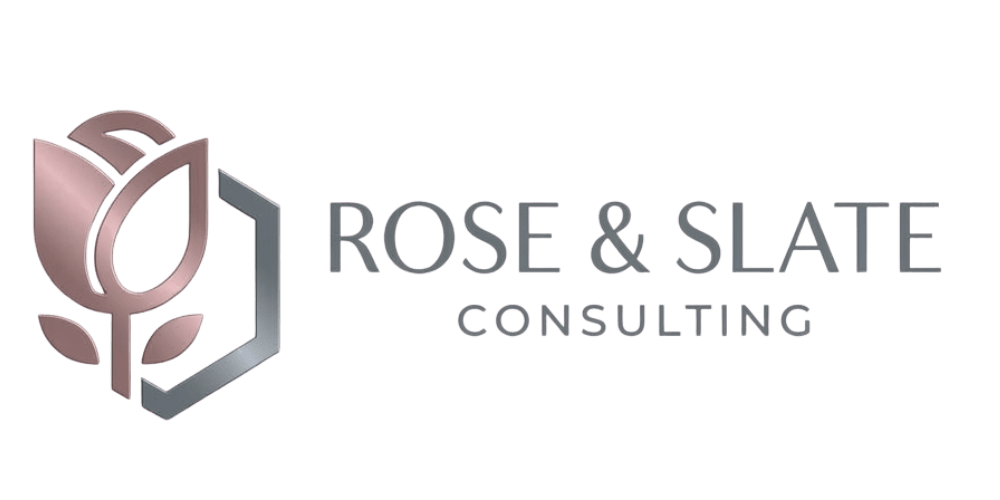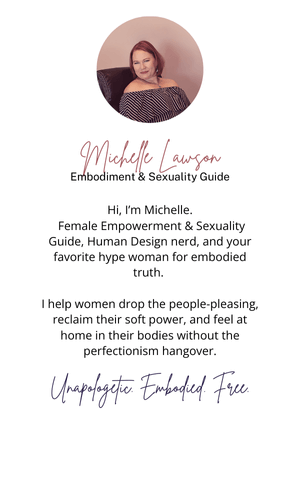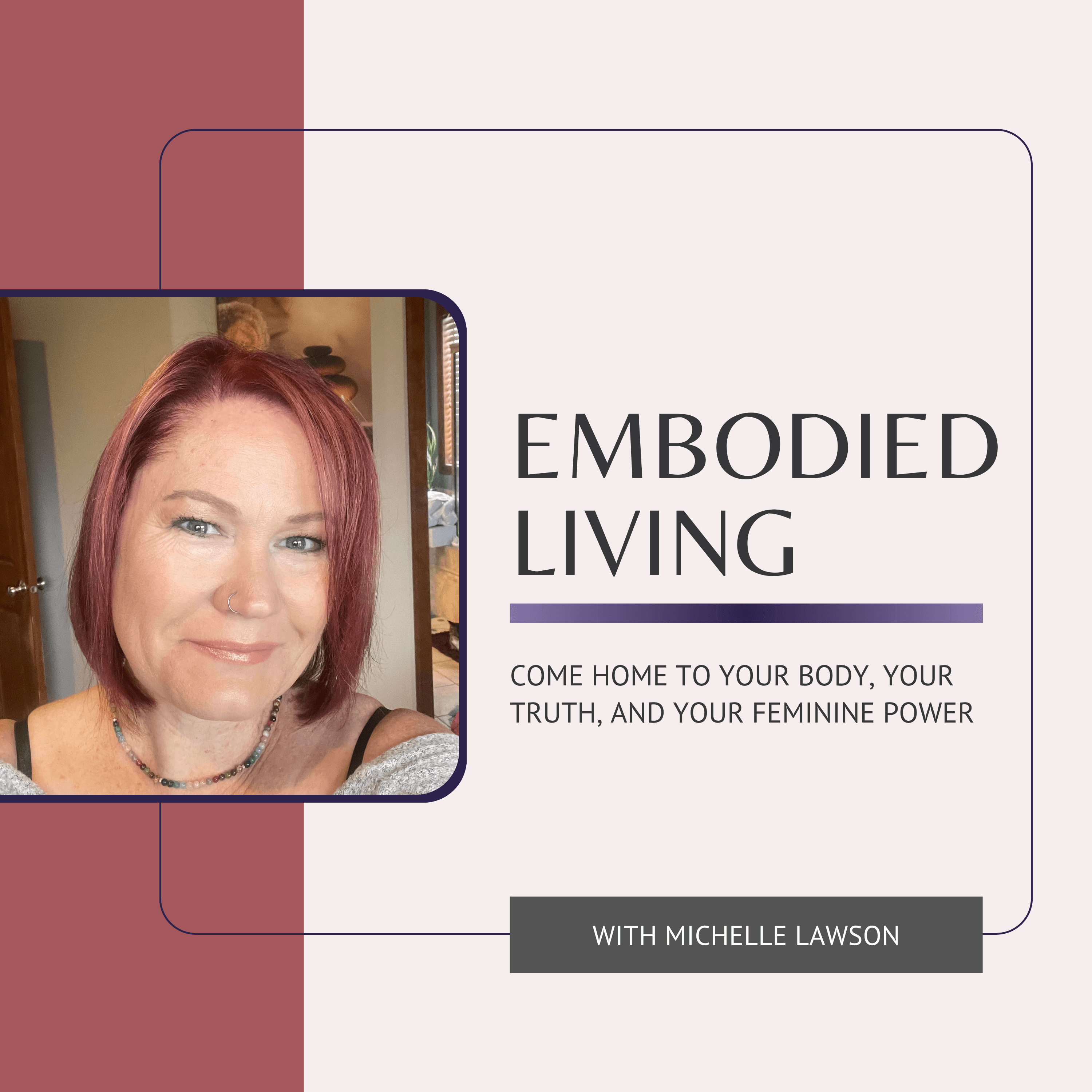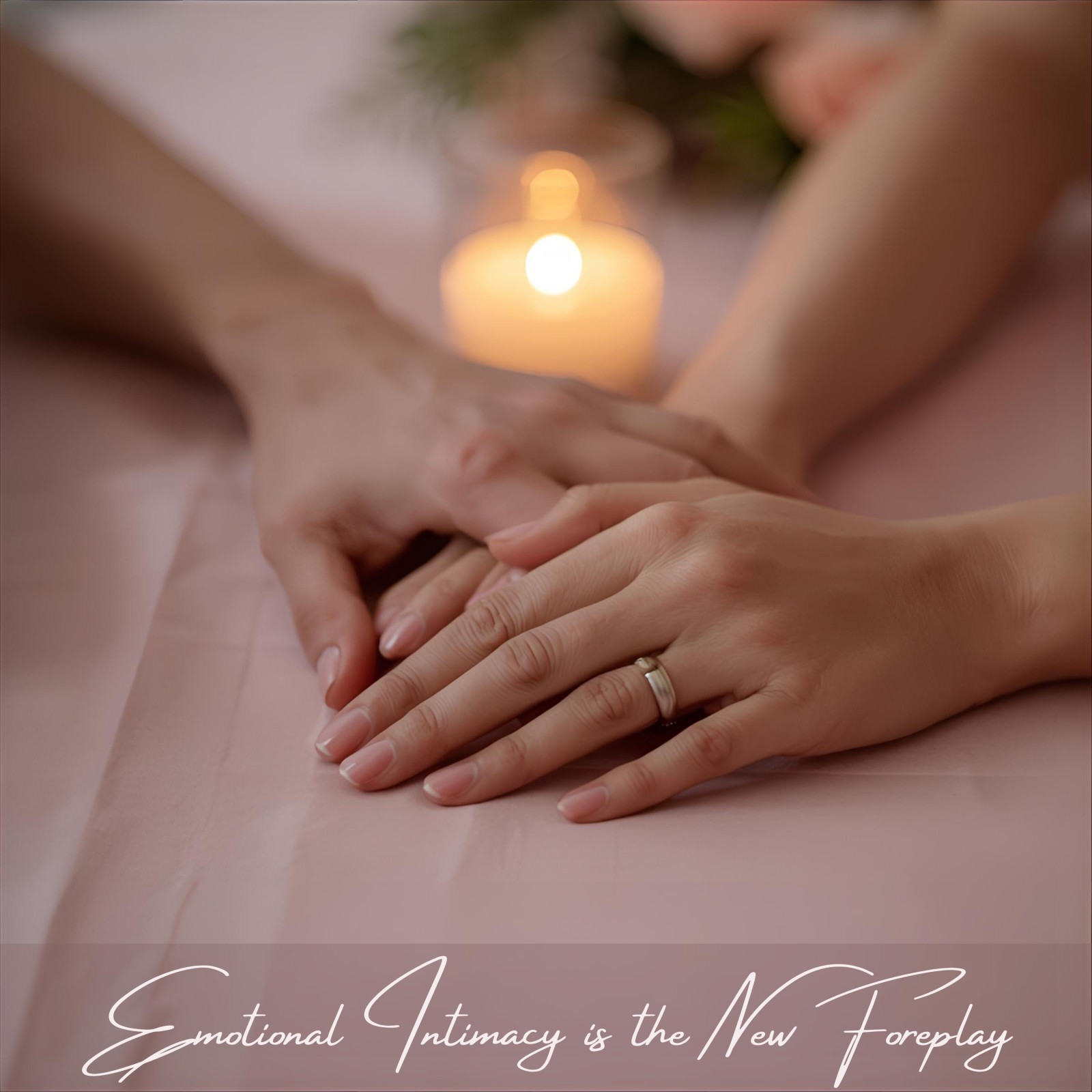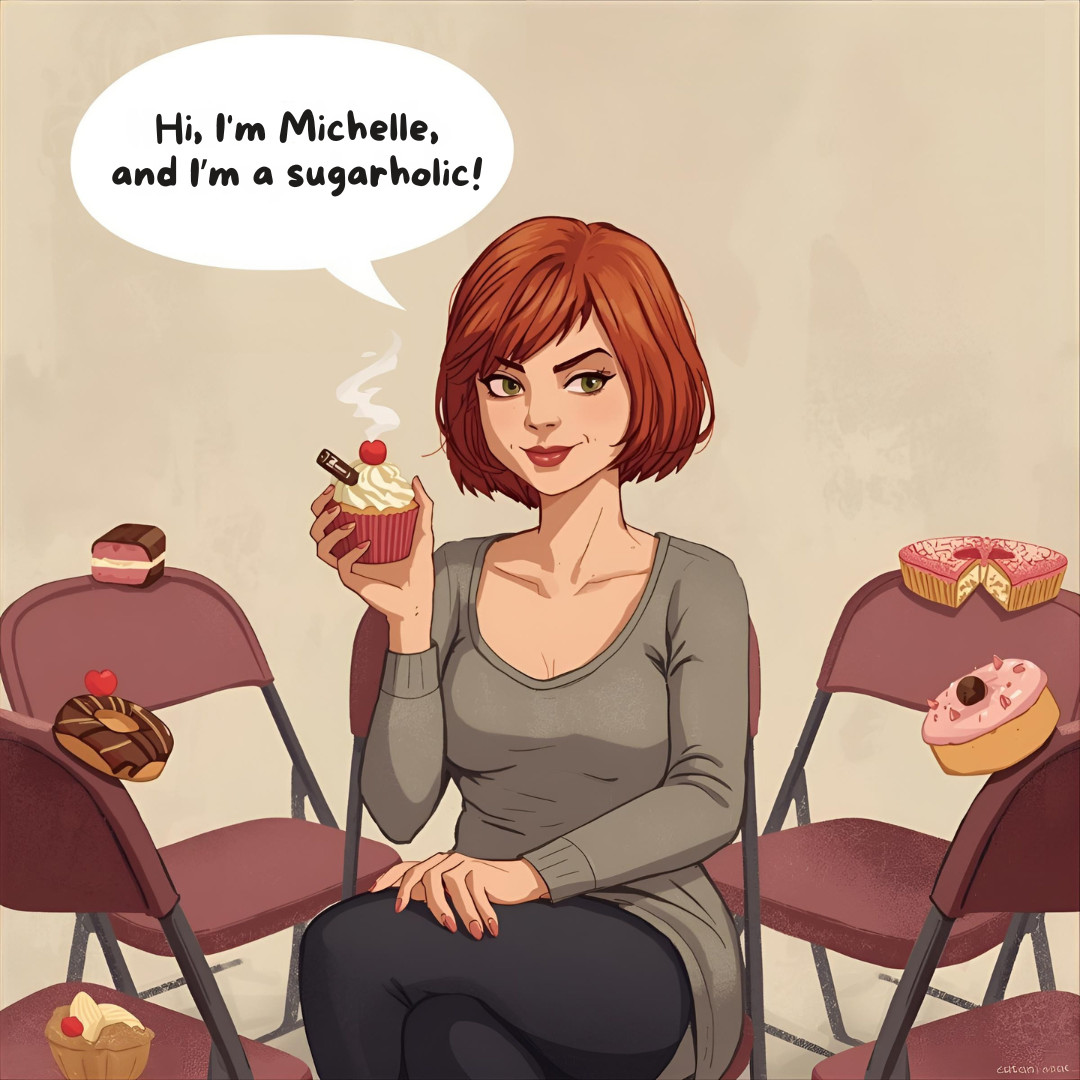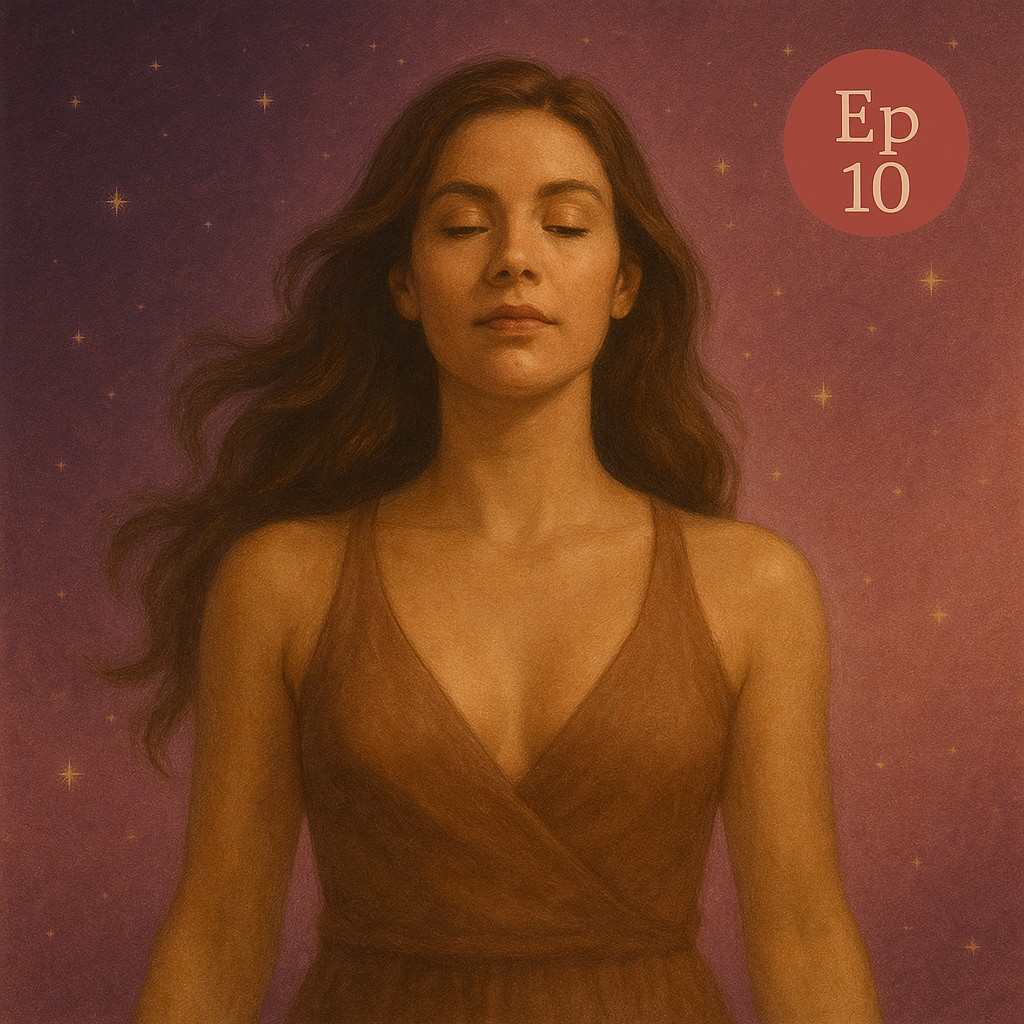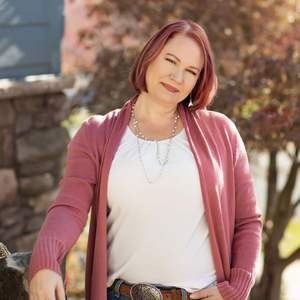- 10/04/2025 09:00 AM Central
- Michelle Lawson
- 0 Comments

 Let’s talk about something that still makes a lot of women squirm…
Let’s talk about something that still makes a lot of women squirm…Sex.
Or more specifically, the silence, shame, and masks we wear in the bedroom.
This episode (and this post) is for the woman who’s ever thought:
“Maybe we’re just not compatible…”
But deep down, she knows that’s not the full truth.
“Maybe we’re just not compatible…”
But deep down, she knows that’s not the full truth.
Why I'm Finally Pulling the Covers Back
When I was 11, I discovered a gift.
Not the kind of gift a preteen wants.
I could talk about sex — and somehow, I just knew things.
I had no experience, but I could offer insight, comfort, and truth to people in a way they needed to hear.
Not the kind of gift a preteen wants.
I could talk about sex — and somehow, I just knew things.
I had no experience, but I could offer insight, comfort, and truth to people in a way they needed to hear.
But I learned quickly: this gift wasn’t “normal.”
I was made fun of. Teased. Silenced.
So I did what many of us do… I hid it.
I was made fun of. Teased. Silenced.
So I did what many of us do… I hid it.
But I’m done hiding.
And I want you to be done too.
And I want you to be done too.
The Masks We Wear in Bed
Here’s what I know:
We wear masks in bed all the time.
The Cool Girl. The Pleaser. The Performer.
- The Cool Girl says yes to things she doesn’t actually want — just to feel accepted. To feel chosen. But that “yes” often leads to shame and disconnection.
- The Pleaser believes if she just gives enough, she’ll be seen as valuable. But with takers, giving never leads to receiving. It just creates depletion.
- The Performer fakes orgasms, sounds, responses — because it feels safer than showing her real self. She puts on a show but feels hollow inside.
And the root of all these masks?
Shame.
Shame.
We are ashamed of our pleasure. Of being “too much.” Of not being enough. Of not being the right kind of sexual woman.
And that shame didn’t start in the bedroom. It started in childhood. In our families. In our churches. In our peer groups.
We were taught to be desired, but not to desire. We were told to be sexy, but not sexual.
Even small things, a joke a partner made, a look, a rejection, a silence, they all lodge in our nervous system.
They all reinforce that our pleasure isn’t welcome here.
 The Myth of “We’re Just Not Compatible”
The Myth of “We’re Just Not Compatible”
Let’s be honest.
How many of you have been told:
“We’re just not sexually compatible.”
How many of you have been told:
“We’re just not sexually compatible.”
Or maybe… you’ve said it yourself.
But what’s really being said?
- “I want you to fuck like I want to be fucked. I don’t care about your needs.”
- “I don’t know what you like, and I’m too afraid to ask.”
- “I don’t even know what I like.”
- “I don’t know what an Erotic Blueprint is or why it even matters.”
We use “compatibility” to hide our fear of communication.
Our fear of being fully seen.
Our fear of being fully seen.
But behind that fear is the doorway to real intimacy.
Understanding the Erotic Blueprints Changed Everything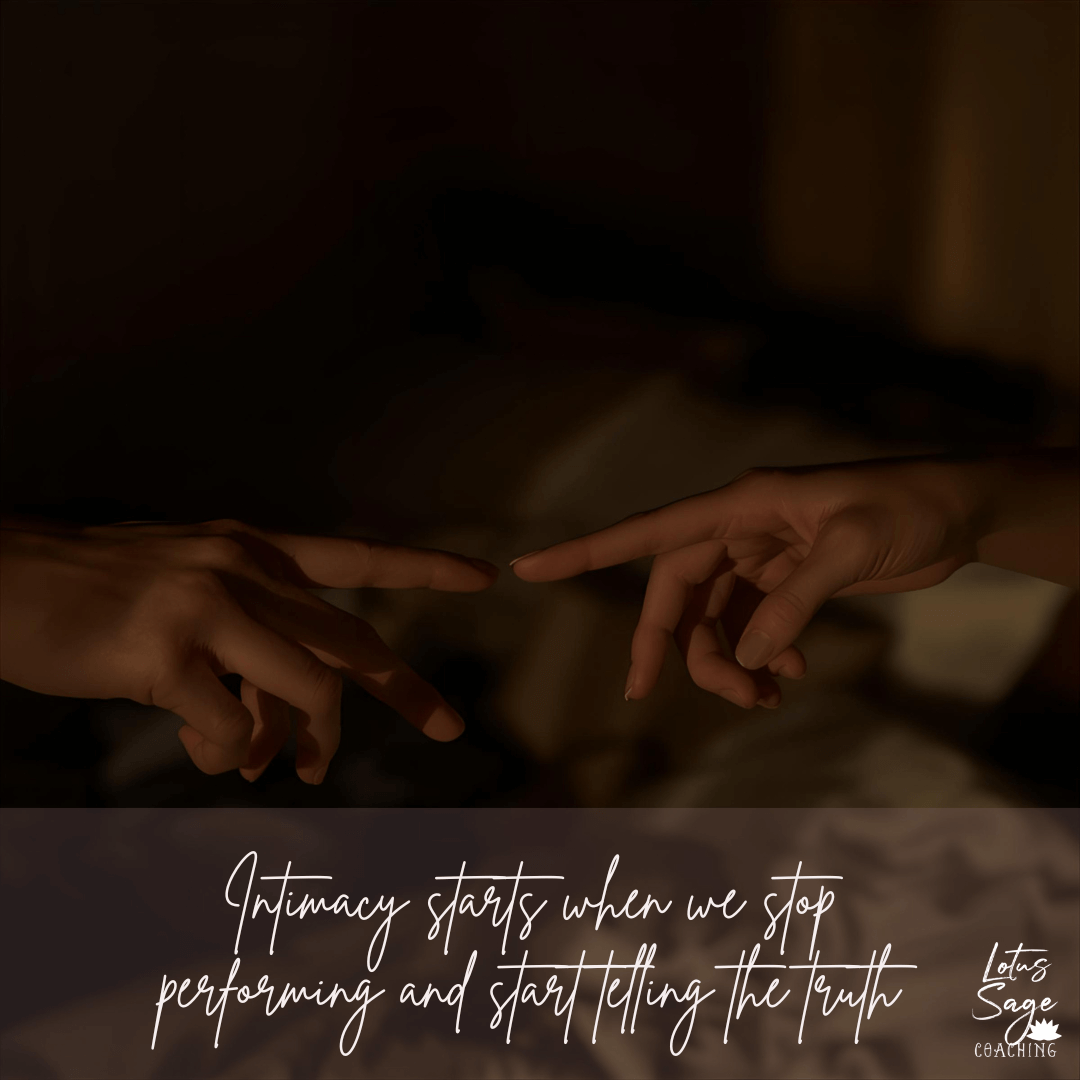
I’m certified in the Erotic Blueprints and had the privilege of learning directly from the creator, Jaiya (you might’ve seen her on Sex, Love, and Goop on Netflix — or read her book Your Blueprint Pleasure).
I didn’t know I was a Sexual/Sensual blend until I explored the Blueprints. And it shifted everything in my relationship.
My partner is a strong Sensual. Knowing this changed the way we make love.
Sometimes, my Sexual side wants intensity — visuals, nudity, penetration, primal connection. Other times, I want the Sensual tenderness — soft music, slow touch, emotional presence.
Because we talk. Because we’re curious. Because we honor our Blueprints, our sex life moves from “just physical” to transcendent.
What’s Your Blueprint?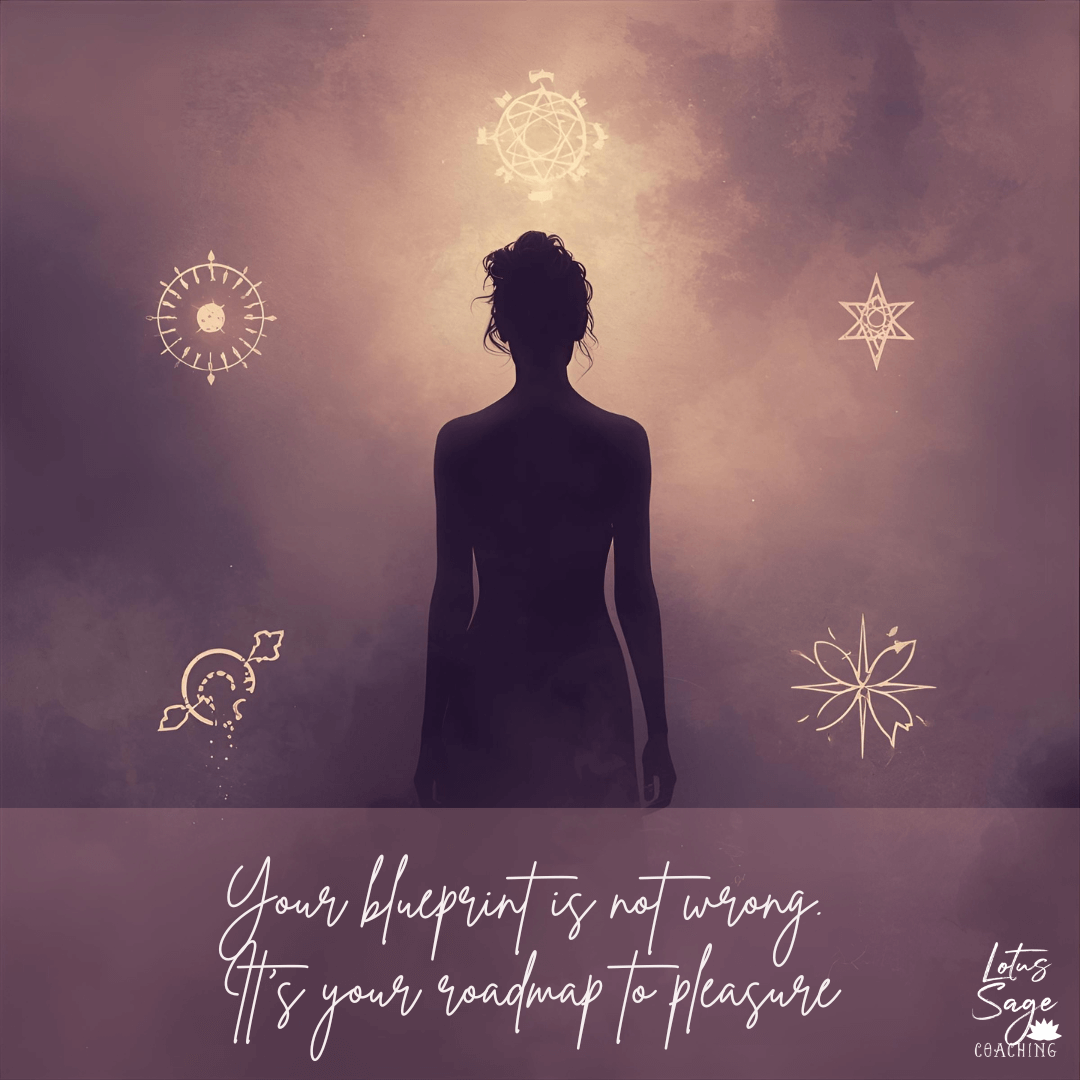
You might be:
- Energetic
- Sensual
- Sexual
- Kinky
- Shapeshifter
Most people are a blend, with a dominant one.
And here’s the thing: None of them are wrong. Each has a superpower. Each has a shadow, often shaped by trauma, shame, or cultural conditioning.
Knowing your Blueprint is like getting a map back to your body. A way to come home and invite your partner in.
Why We Hide
We hide because we were taught to. We hide because someone once mocked our sounds, our body, our desires. We hide because we’re afraid that our truth might be rejected.
But when we stay hidden, we’re the ones rejecting ourselves.
But when we stay hidden, we’re the ones rejecting ourselves.
You don’t have to perform. You don’t have to be “low maintenance.” You don’t have to dim yourself to be loved.
 The Conversations That Change Everything
The Conversations That Change Everything
Yes, talking about sex is vulnerable AF. It’s raw. Messy. Exposing. But it’s also the doorway to intimacy.
And here’s the secret: When you share your vulnerability, you give your partner permission to share theirs. And that’s the gift of true connection.
Vulnerability held in sacred trust between two people who want to know each other.
Start with:
- “Can I share something that’s been on my mind?”
- “I’ve been curious about trying…”
- “I love when you…”
That’s where intimacy begins. That’s where healing happens.
Final Thoughts & Soul Work
This week, I want you to:
✨ Get curious about your Erotic Blueprint.
✨ Ask yourself: What do I like? What do I need?
✨ Speak one truth even if your voice shakes.
Because you don’t have to be perfect to be powerful. You just have to be honest.
🎧 Listen to the Full Episode:
“Afraid to Talk About Sex? Why We Hide in the Bedroom”
Now streaming on [Spotify, Apple, or your favorite app].
💬 Let’s Talk About It
DM me after you listen.
Share this with a sister or your partner.
Let’s take the masks off together.
Share this with a sister or your partner.
Let’s take the masks off together.
💌 Want More Like This?
If this post stirred something in you don’t stop here.
Join my newsletter and receive:
- Weekly insights and soulful stories
- Tools to reconnect with your body, truth, and feminine essence
- Exclusive invites, meditations, and embodiment rituals
✨ Join the movement of women reclaiming their voice, pleasure, and power.
Did you enjoy what you read here? If you did, share it with a friend.
If you would like more about the Embodied Living Course, click below
Follow me on social:
- 08/30/2025 09:00 AM Central
- Michelle Lawson
- 0 Comments

My Name is Michelle, and I’m a Sugarholic!
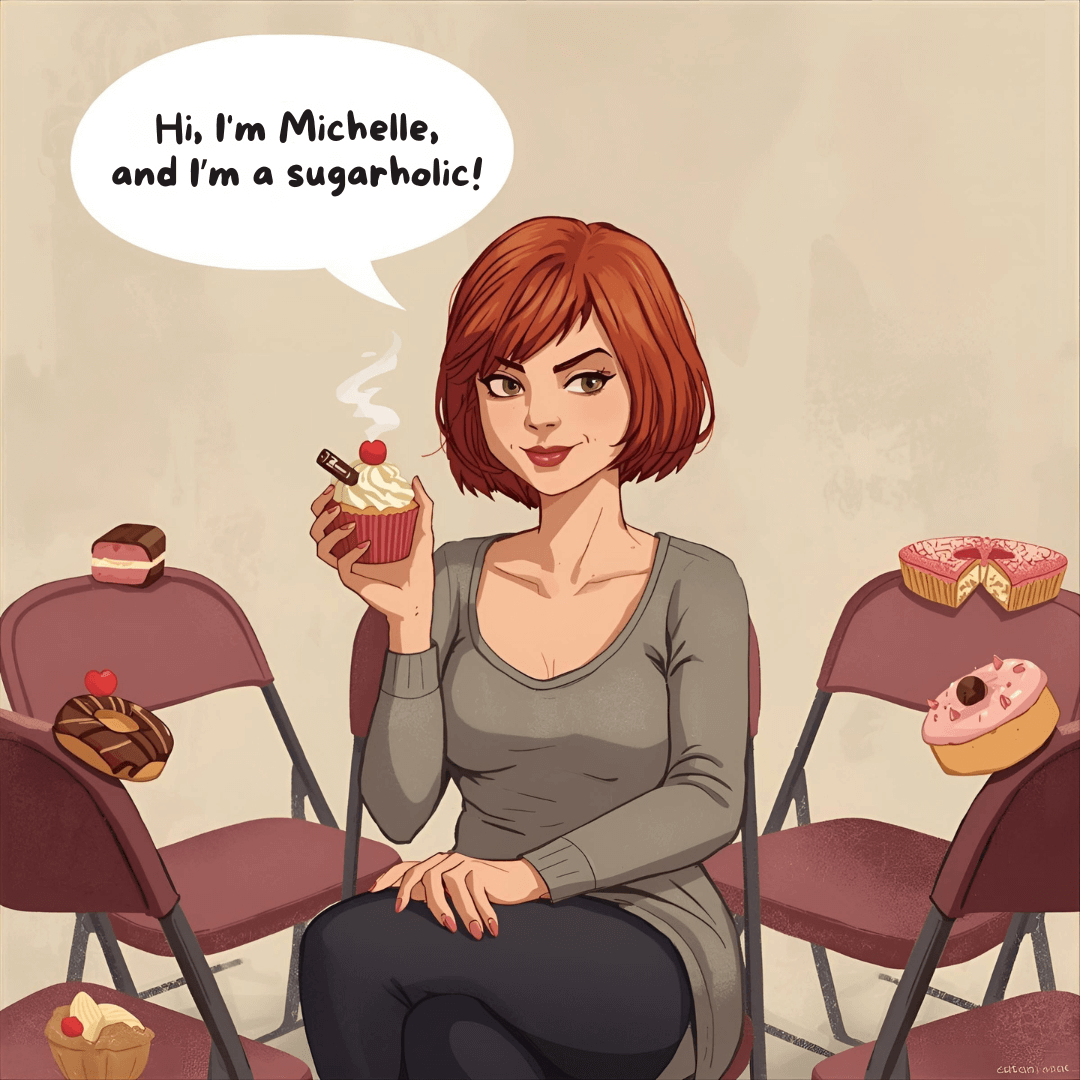 There, I said it. Cute, cheeky, but oh-so-true. I’ve tried to quit sugar more times than I can count. Sixty-day resets, fasting experiments, swearing it off for good and yet sugar always comes back around, batting its sweet little lashes and owning me all over again.
There, I said it. Cute, cheeky, but oh-so-true. I’ve tried to quit sugar more times than I can count. Sixty-day resets, fasting experiments, swearing it off for good and yet sugar always comes back around, batting its sweet little lashes and owning me all over again.Diabetes runs deep on my dad’s side, all the way back to the 1960s. I had gestational diabetes when I was pregnant, and now, lucky me, I’m officially pre-diabetic. My numbers aren’t where they should be, no matter how many times I try to hit the reset button.
Just last week, I even did a 36-hour fast. I dropped 3 pounds overnight and got one of my best blood sugar readings ever. And yet, the cravings still whisper. The pull is always there. Sugar owns me in ways broccoli never will.
And here’s the kicker: I’m not alone. Diabetes has exploded in the past five decades. In the early 1960s, only about 1.8% of Americans had diabetes. Today? Over 11% of the U.S. population, nearly 38 million people, are living with it, plus another 97 million with prediabetes. Globally, the numbers have doubled since 1980, climbing from 200 million to over 800 million adults.
This isn’t just “a sweet tooth.” It’s an epidemic. And it’s one I feel in my own body every day.
Why Sugar is Addictive Like a Drug
Sugar doesn’t just “taste good", it hijacks the brain’s reward system in the exact same way illegal drugs do. When you eat something sweet, your brain releases dopamine, the same feel-good chemical that spikes when someone uses cocaine or nicotine. On top of that, sugar triggers opioid receptors in the brain, just like heroin does.
The pattern is eerily familiar:
- The High → You get the rush, the satisfaction, the “ahhh” moment.
- Tolerance → Over time, you need more sugar to feel that same buzz.
- Withdrawal → When you cut it out? Headaches, irritability, mood swings, anxiety — just like detox, only dressed in sprinkles.
That’s not willpower failing. That’s biochemistry. The only difference? Cocaine and heroin are illegal. Sugar is sold in family-sized packs and handed out at kids’ birthday parties.
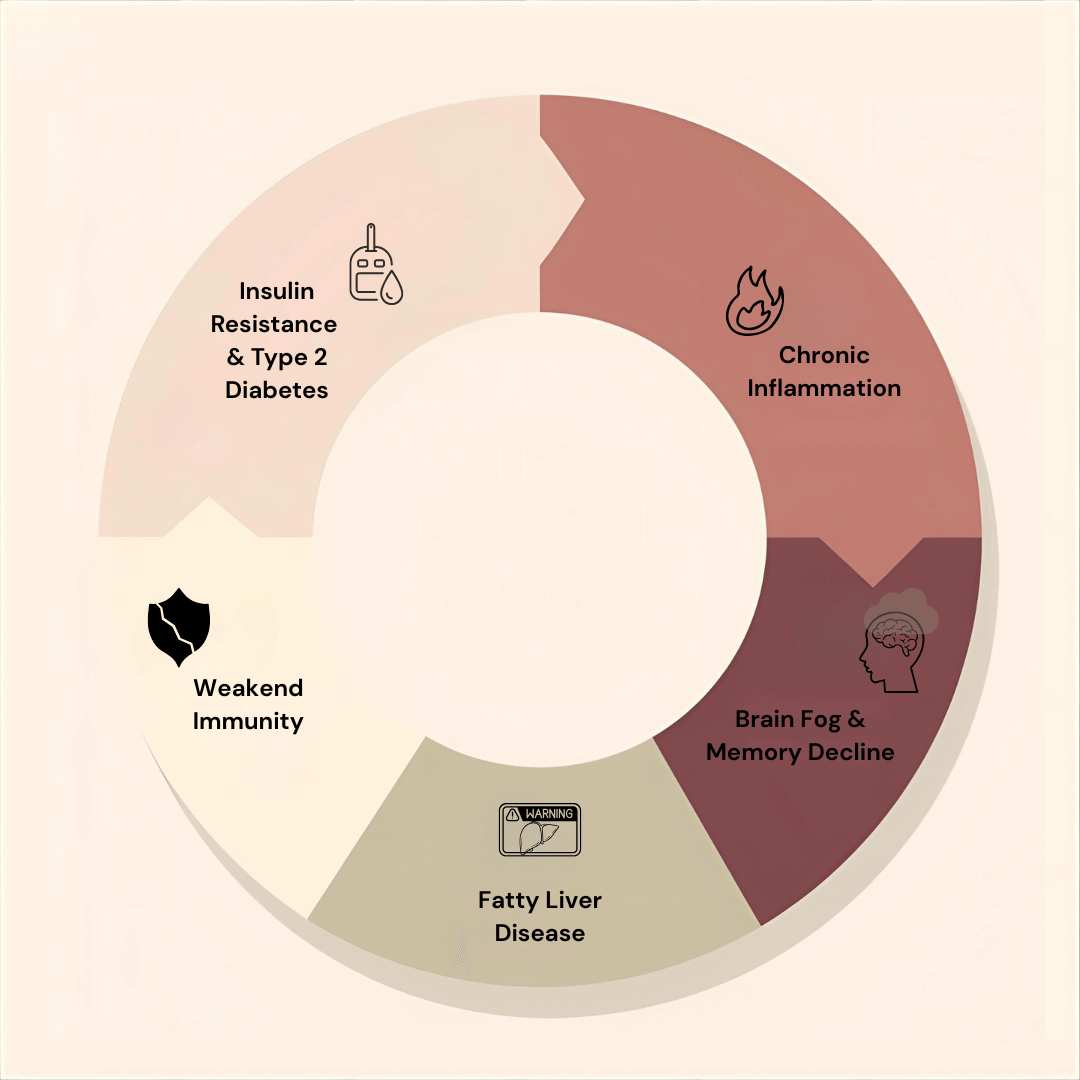 The Body Toll: Sugar’s Silent Wreckage
The Body Toll: Sugar’s Silent Wreckage
Illegal drugs get attention because they can kill fast. Sugar is sneaky. It kills slowly.
Here’s the body damage sugar racks up while we tell ourselves it’s just a “treat”:
- Insulin resistance & type 2 diabetes → Sugar floods the bloodstream, your body drowns in insulin, and eventually the system breaks down.
- Chronic inflammation → A root cause of almost every modern disease, from heart problems to depression.
- Brain fog & memory decline → High sugar intake is linked to cognitive decline and even brain shrinkage.
- Fatty liver disease → Not from alcohol, but from soda and sweets.
- Weakened immunity → Sugar depresses immune cells for hours after you eat it.
All of this without the social stigma or warning labels. Just a cute cupcake on Instagram.
The Bigger Picture
So is sugar exactly the same as heroin or cocaine? No. The dopamine spike isn’t as violent. The withdrawal isn’t as deadly.
But the long-term health impact? At scale, sugar kills far more people. Heart disease, obesity, diabetes, and dementia together dwarf the death toll of illegal drugs.
And because it’s legal, celebrated, and cheap it might just be the most dangerous addiction of all.
Call to Action
If this stings a little, good. It’s supposed to. Because the solution isn’t guilt or never eating cake again. It’s awareness. It’s cutting back where you can. It’s retraining your brain to crave what actually nourishes you.
Think of it this way: sugar isn’t just dessert. It’s a drug. And every time you choose differently you’re breaking free.
Want to learn more? Here are a few powerful reads you can check out:
 “Your health matters more than any craving, any quick fix, or any excuse. It’s time to embody your health -- to live it in your choices, in your rituals, and in the way you care for yourself every single day.”
“Your health matters more than any craving, any quick fix, or any excuse. It’s time to embody your health -- to live it in your choices, in your rituals, and in the way you care for yourself every single day.”Did you enjoy what you read here? If you did, share it with a friend.
If you would like more about the Embodied Living Course, click below
Follow me on social:
